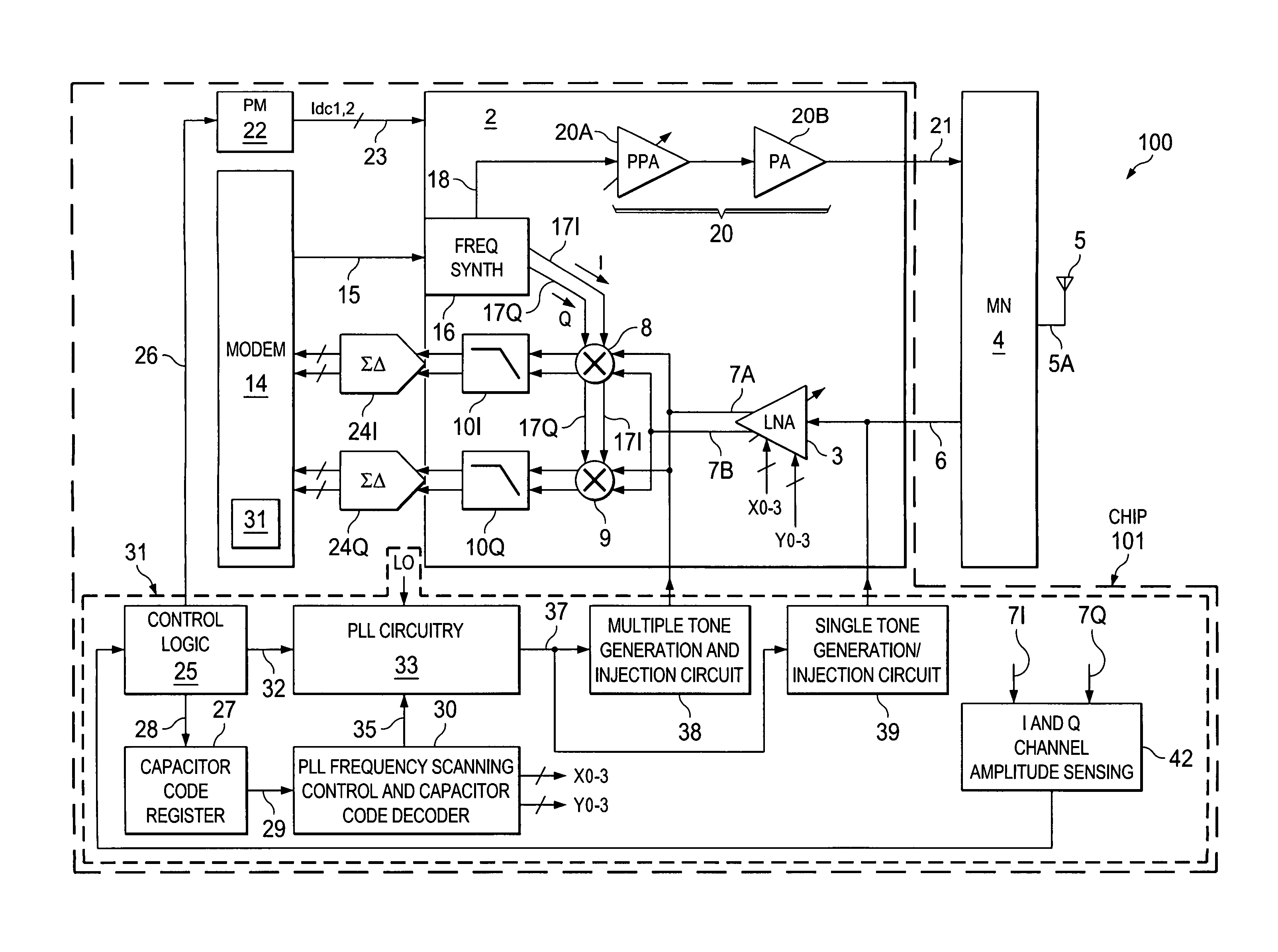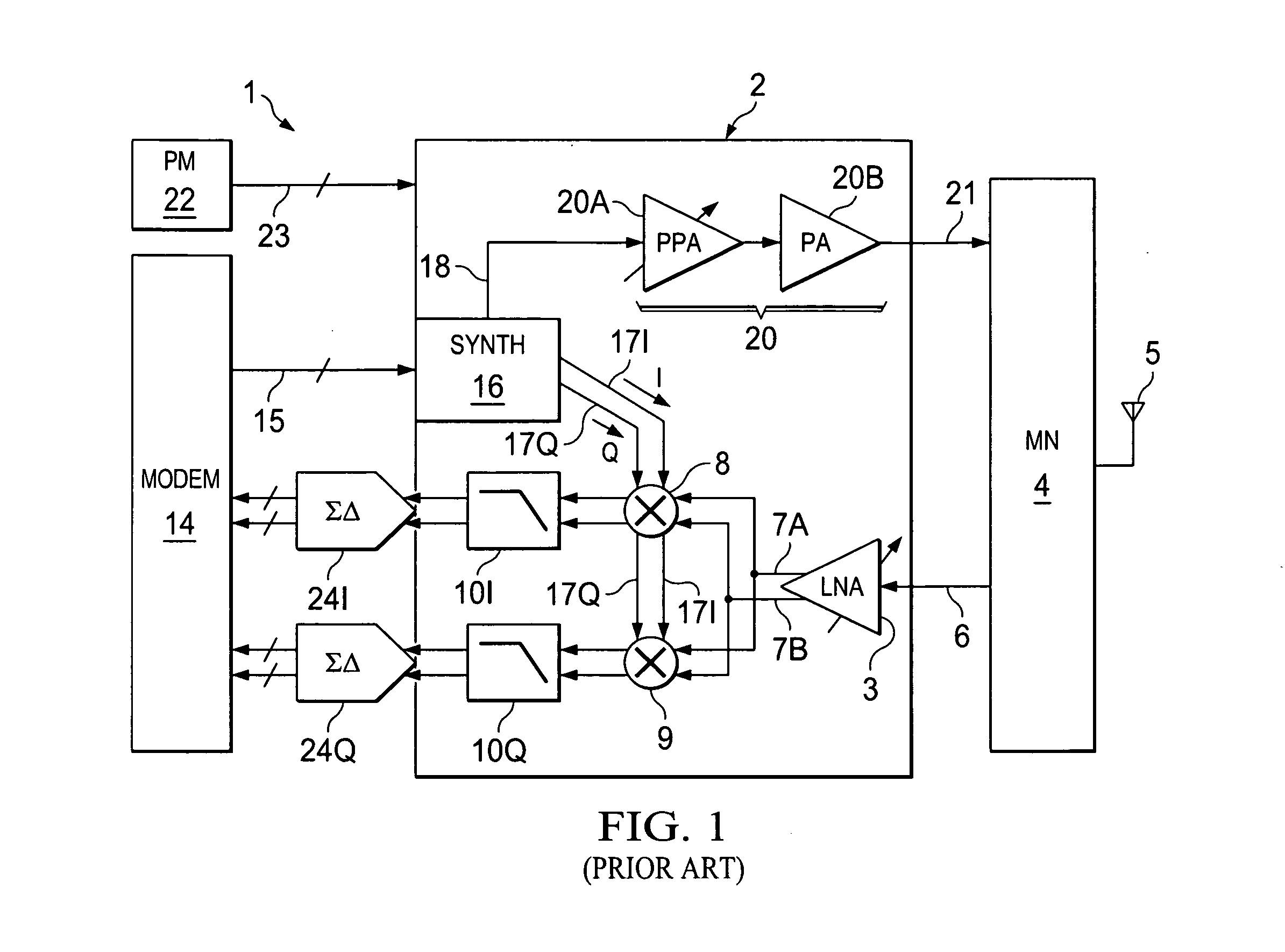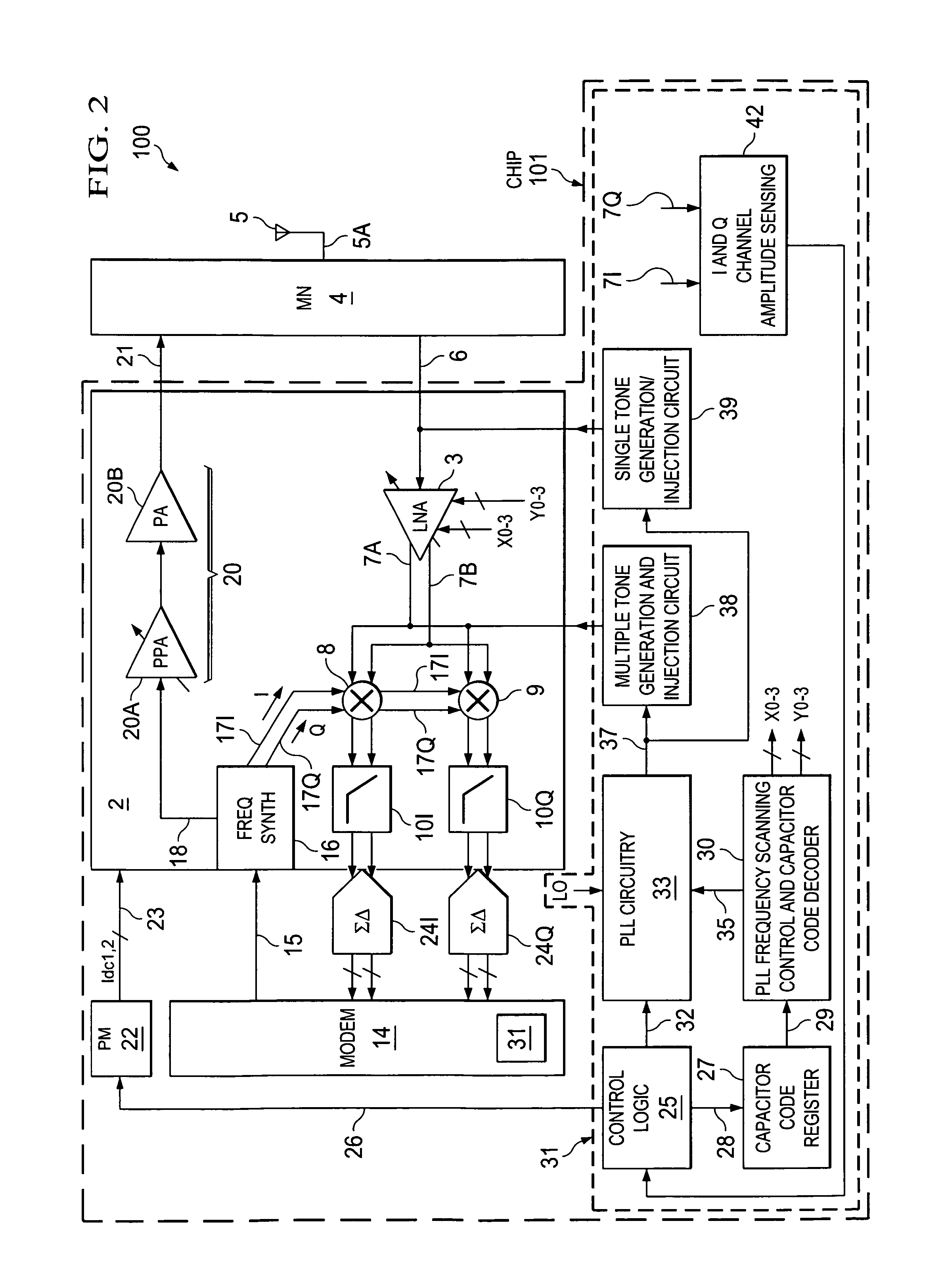Built in self test and method for RF transceiver systems
a transceiver and self-testing technology, applied in the field of rf (radio frequency) transceivers, can solve the problems of reducing the quality factor q of the tank circuit, increasing the error rate of center frequency, and reducing the dynamic range of the integrated circuit transceiver circuitry. , to achieve the effect of improving the dynamic range of the integrated circuit transceiver circuitry and reducing power consumption
- Summary
- Abstract
- Description
- Claims
- Application Information
AI Technical Summary
Benefits of technology
Problems solved by technology
Method used
Image
Examples
Embodiment Construction
[0056]Built-in self-testing circuitry and methodology in an integrated circuit RF transceiver combine to automatically compensate for integrated circuit manufacturing process variations that are within worst-case (but not necessarily precisely known) values and also to compensate for chip temperature variations so as to maintain a high Q (qualify) factor of tank circuits in the transceiver, substantially reduce power consumption, and improve the dynamic range and tuning accuracy of the transceiver.
[0057]FIG. 2 illustrates a low-power, high dynamic range RF transceiver system 100 including an integrated circuit RF transceiver chip 101 and an external impedance matching network 4 which is connected to an external antenna 5. Transceiver-chip 101 in FIG. 2 includes a typical low-power RF front end circuit 2 coupled by impedance matching network 4 to antenna 5. A modem 14 is coupled to a “quadrature-phase channel” or “Q signal” channel of transceiver front end circuit 2 by means of a del...
PUM
 Login to View More
Login to View More Abstract
Description
Claims
Application Information
 Login to View More
Login to View More - R&D
- Intellectual Property
- Life Sciences
- Materials
- Tech Scout
- Unparalleled Data Quality
- Higher Quality Content
- 60% Fewer Hallucinations
Browse by: Latest US Patents, China's latest patents, Technical Efficacy Thesaurus, Application Domain, Technology Topic, Popular Technical Reports.
© 2025 PatSnap. All rights reserved.Legal|Privacy policy|Modern Slavery Act Transparency Statement|Sitemap|About US| Contact US: help@patsnap.com



